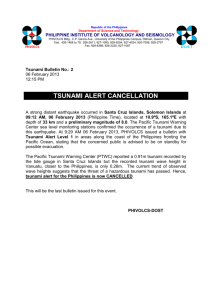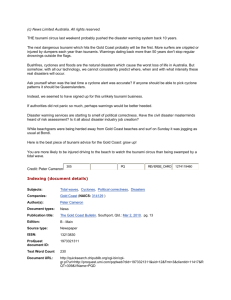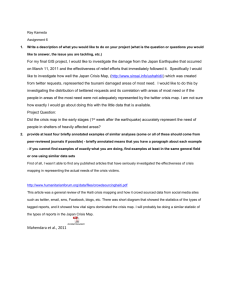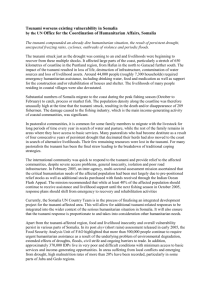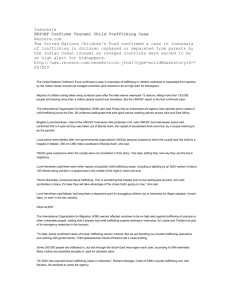Lessons Learned on WASH Sent to Haiti Emergency Response, 2010
advertisement
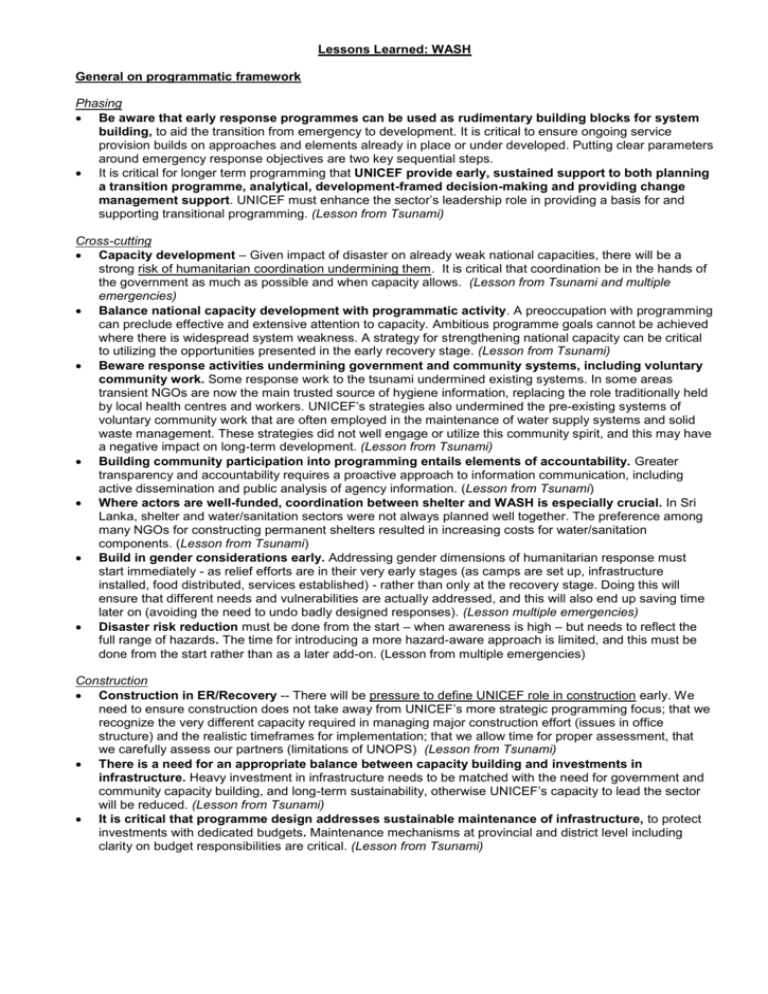
Lessons Learned: WASH General on programmatic framework Phasing Be aware that early response programmes can be used as rudimentary building blocks for system building, to aid the transition from emergency to development. It is critical to ensure ongoing service provision builds on approaches and elements already in place or under developed. Putting clear parameters around emergency response objectives are two key sequential steps. It is critical for longer term programming that UNICEF provide early, sustained support to both planning a transition programme, analytical, development-framed decision-making and providing change management support. UNICEF must enhance the sector’s leadership role in providing a basis for and supporting transitional programming. (Lesson from Tsunami) Cross-cutting Capacity development – Given impact of disaster on already weak national capacities, there will be a strong risk of humanitarian coordination undermining them. It is critical that coordination be in the hands of the government as much as possible and when capacity allows. (Lesson from Tsunami and multiple emergencies) Balance national capacity development with programmatic activity. A preoccupation with programming can preclude effective and extensive attention to capacity. Ambitious programme goals cannot be achieved where there is widespread system weakness. A strategy for strengthening national capacity can be critical to utilizing the opportunities presented in the early recovery stage. (Lesson from Tsunami) Beware response activities undermining government and community systems, including voluntary community work. Some response work to the tsunami undermined existing systems. In some areas transient NGOs are now the main trusted source of hygiene information, replacing the role traditionally held by local health centres and workers. UNICEF’s strategies also undermined the pre-existing systems of voluntary community work that are often employed in the maintenance of water supply systems and solid waste management. These strategies did not well engage or utilize this community spirit, and this may have a negative impact on long-term development. (Lesson from Tsunami) Building community participation into programming entails elements of accountability. Greater transparency and accountability requires a proactive approach to information communication, including active dissemination and public analysis of agency information. (Lesson from Tsunami) Where actors are well-funded, coordination between shelter and WASH is especially crucial. In Sri Lanka, shelter and water/sanitation sectors were not always planned well together. The preference among many NGOs for constructing permanent shelters resulted in increasing costs for water/sanitation components. (Lesson from Tsunami) Build in gender considerations early. Addressing gender dimensions of humanitarian response must start immediately - as relief efforts are in their very early stages (as camps are set up, infrastructure installed, food distributed, services established) - rather than only at the recovery stage. Doing this will ensure that different needs and vulnerabilities are actually addressed, and this will also end up saving time later on (avoiding the need to undo badly designed responses). (Lesson multiple emergencies) Disaster risk reduction must be done from the start – when awareness is high – but needs to reflect the full range of hazards. The time for introducing a more hazard-aware approach is limited, and this must be done from the start rather than as a later add-on. (Lesson from multiple emergencies) Construction Construction in ER/Recovery -- There will be pressure to define UNICEF role in construction early. We need to ensure construction does not take away from UNICEF’s more strategic programming focus; that we recognize the very different capacity required in managing major construction effort (issues in office structure) and the realistic timeframes for implementation; that we allow time for proper assessment, that we carefully assess our partners (limitations of UNOPS) (Lesson from Tsunami) There is a need for an appropriate balance between capacity building and investments in infrastructure. Heavy investment in infrastructure needs to be matched with the need for government and community capacity building, and long-term sustainability, otherwise UNICEF’s capacity to lead the sector will be reduced. (Lesson from Tsunami) It is critical that programme design addresses sustainable maintenance of infrastructure, to protect investments with dedicated budgets. Maintenance mechanisms at provincial and district level including clarity on budget responsibilities are critical. (Lesson from Tsunami)





